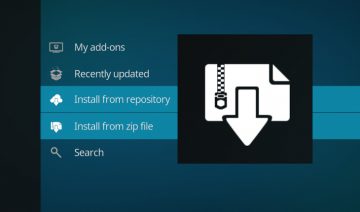As a person who makes a rather intensive use of desktops and different desktop environments, I’ve found myself not once contemplating about what is the most effective design for the big screen which also doesn’t subtract from its eye-candy?
Now that Microsoft has announced their convergence plans, it’s became very clear that each device should have its own dedicated interface.
In this article I’m going to share most of the conclusions I’ve reached so far regarding that topic, plus an image depicting my current perfect desktop vision, let’s find out whether you and I think alike, shall we?
Ultimate Desktop Guiding Principles
First I’d like to focus on the principles upon which I’m going to base my claims, since the world is grand and full of diverse opinions, it’s better that we start from the basics.
The foundations for building the ultimate desktop are as follows:
- Minimalism – a principle which creates simplicity and is also security-wise: the less code you have the less vulnerable you are.
- Maximal utilization – like most things we care about in life, our goal is to make the most out of what we have.
- Coherency – a principle which brings fluidness into both our work-flow and the appearance of our environment.
- Attractiveness – no need to elaborate here, we all like beautiful things!
Maximizing the use of screen real estate while at the same time sticking to a minimalist approach is one of the greatest design challenges designers face today.
On the surface, it seems that both principles are conflicting each other, however, on a lower, more fundamental level – things aren’t the way they seems.
Basically, minimalism says: “less is More”, i.e. instead of drowning the users with too many unnecessary features, you present them with only the fundamental ones by placing them in a noticeable, viable places.
But this doesn’t means the user is denied from a complete, feature-reach environment, on the contrary, there are many strategies which can provide the user all the necessary functions he need while not overflooding him with choices.
For example, one strategy that is widely popular nowadays is having addons / extensions / plugins available at the user disposal, this way the user can get all the functionalities he need while avoiding others he don’t.
Tabs on Top Apps at Bottom
Whatever desktop design we may consider, this should be our premise. Actually it can also work the other way around however, since there aren’t much apps (3rd party) which have their tabs at bottom, we should probably stick to that.
The key point here is that apps placement must be different than where tabs are located – having both at the same location / close-to-each-other may produce faults such as closing app instead of tab and vice versa.
These faults are caused not only by having a habit ingrained in us (mostly Windows users), but also because of what is commonly referred to as the “autopilot syndrome”:
When your brain gets used to doing a certain task it invests less resources in it, thus when reaching your mouse to the top in order to close a tab, you may easily err and accidentally close an app instead, since both are placed close to each other and the same operation (closing) can apply to both.
Why at the bottom and not left side just like Unity for example?
At the early days of Unity development, I remember I once heard some designer say that since nowadays most people have wide-screens it would be wiser to give up on screen-real-estate from the side than from the bottom / top.
While the point he made is certainly true in that perspective, there are other factors we should consider on that matter:
For instance, our eyes can pick up more information and in much faster rate – horizontally than vertically (this is also one of the reasons why wide-screens are so wide spread), thus when you place a bar which suppose to serve as both quick-launch and an indicator of which apps are running, you also want it to be easily skimmed.
Another supportive argument in favor of apps at bottom comes through the principle of minimalism – this way other widgets beside apps (= clock, date, notification icons) can also be placed on the same bar hence being constantly visible to the user while also removes the need for another separate panel.
Try it for yourselves, Windows users – try working one week with your Taskbar to the side of your screen. Unity users – try customizing Ubuntu to have the bar at the bottom, note which position made it easier on you to find / launch apps.
Continue to the next page









